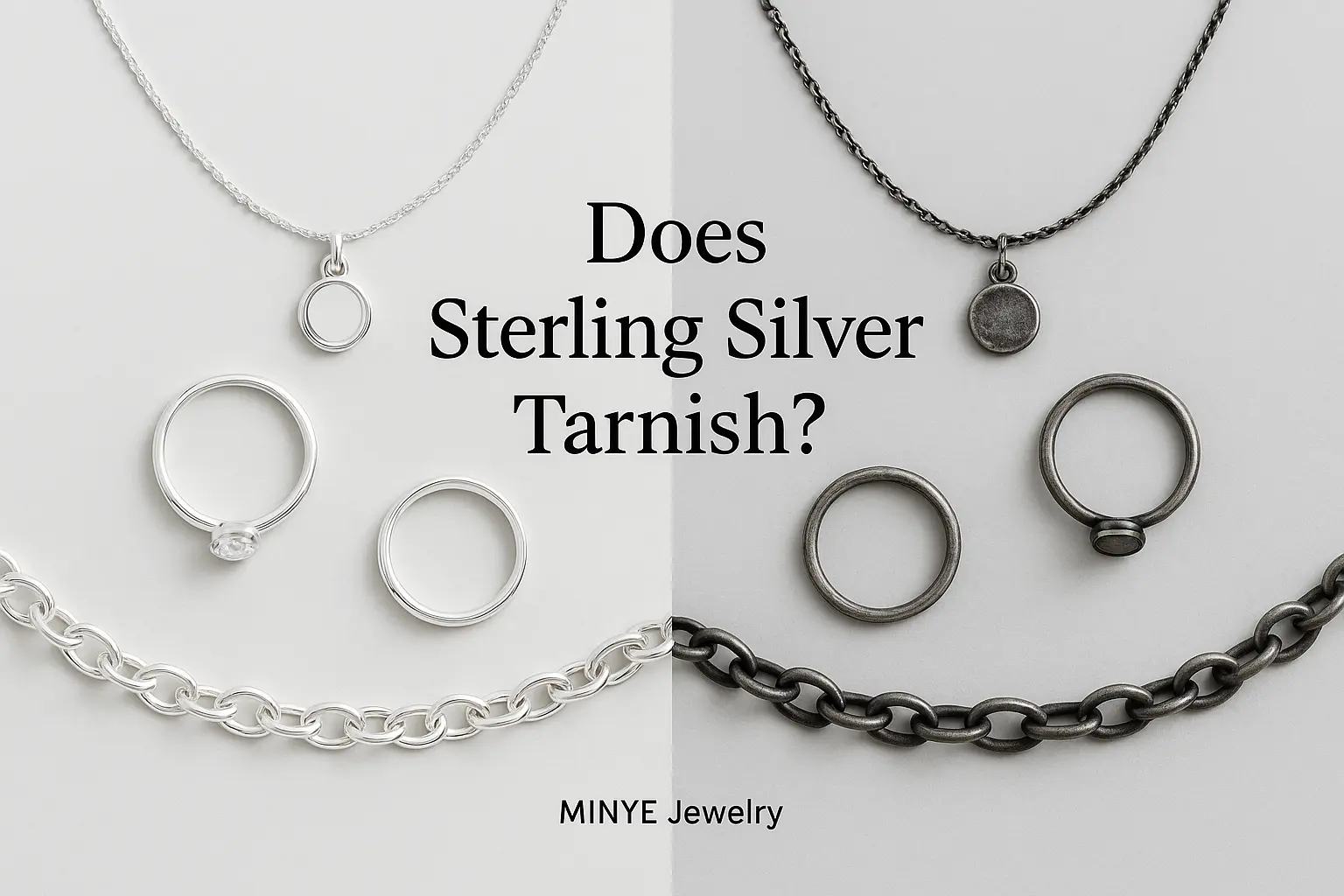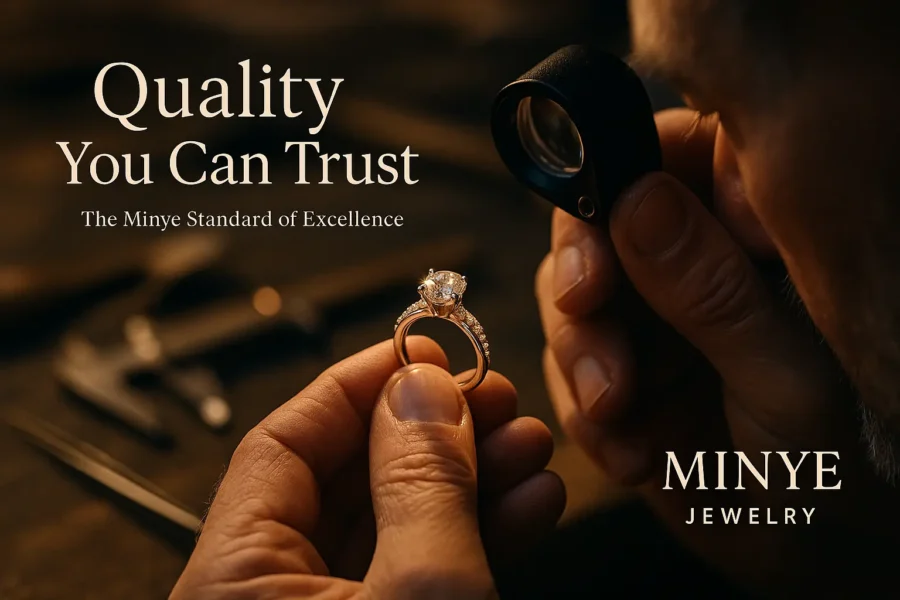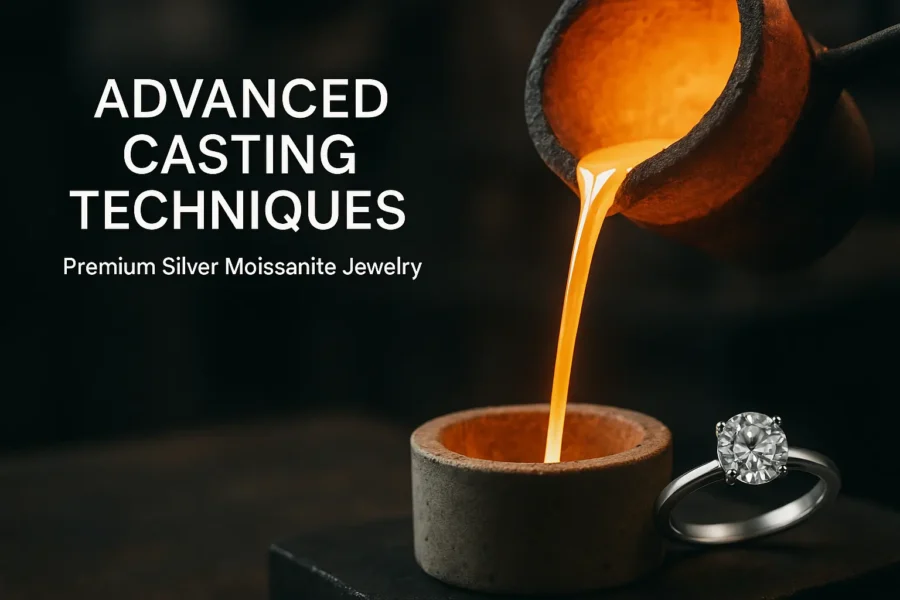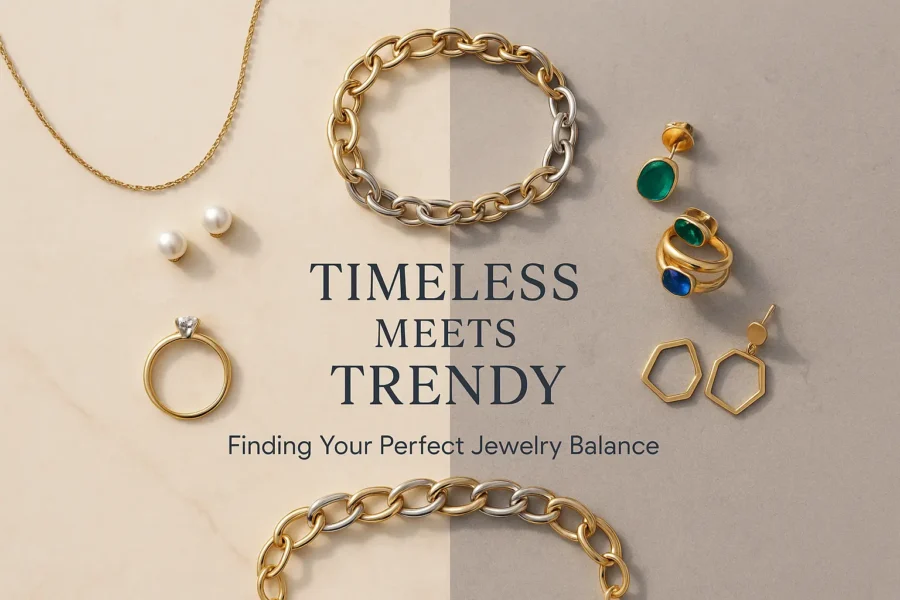Sterling silver jewelry has been a popular choice for centuries due to its beautiful luster, versatility, and affordability compared to other precious metals. Whether you’re considering adding sterling silver pieces to your collection or already own some, you might wonder about its durability and maintenance. One common question that often arises is: does sterling silver tarnish? Let’s explore this topic in depth to help you better understand and care for your sterling silver jewelry.
What Is Sterling Silver?
Sterling silver is an alloy composed of 92.5% pure silver and 7.5% other metals, typically copper. This composition is why you’ll often see sterling silver marked with “925” or “.925” – indicating the percentage of pure silver content. The addition of other metals serves an important purpose: pure silver (99.9% silver) is actually too soft for practical use in jewelry. By adding copper or other metals, sterling silver gains the necessary durability and strength to withstand daily wear while maintaining the beautiful appearance of silver.
The resulting alloy offers an excellent balance between the luxurious appearance of precious metal and practical durability, making it a fantastic choice for jewelry that can be worn regularly without the high cost of gold or platinum.

Does Sterling Silver Tarnish?
The short answer is yes, sterling silver does tarnish. This isn’t a defect or sign of poor quality; rather, it’s a natural chemical process that affects virtually all sterling silver items over time. Tarnish appears as a dark discoloration that can range from yellow to brown to black, depending on the severity and causes of the tarnishing.
What might surprise many jewelry lovers is how quickly tarnishing can occur under certain conditions. In highly humid environments or when exposed to certain chemicals, sterling silver can begin to show signs of tarnish in as little as a few months or even weeks. However, with proper care and storage, you can significantly slow this process and maintain your silver’s brilliant shine for much longer periods.

Why Does Sterling Silver Tarnish?
Understanding why sterling silver tarnishes helps in preventing it. Tarnish is primarily the result of a chemical reaction between silver and sulfur compounds in the air. When silver is exposed to air containing sulfur compounds, it forms silver sulfide on the surface, creating that characteristic dark layer we recognize as tarnish.
Several factors can accelerate the tarnishing process:
- Humidity and moisture: High humidity environments speed up the reaction between silver and sulfur compounds.
- Air pollution: Areas with higher levels of sulfur dioxide in the air (common in industrial areas) can cause silver to tarnish more quickly.
- Body chemistry: Everyone’s skin has a unique chemical composition. Some people’s natural oils and perspiration contain compounds that can accelerate tarnishing when in contact with silver.
- Cosmetics, perfumes, and lotions: Many beauty products contain chemicals that can react with silver and cause tarnishing.
- Certain foods: Foods high in sulfur content like eggs, onions, and some seafood can transfer sulfur compounds from your fingers to your jewelry.
- Household chemicals: Cleaning products, chlorinated water, and latex can all contribute to tarnishing.
Interestingly, the copper in sterling silver is often the primary culprit in the tarnishing process. Pure silver tarnishes much more slowly, but as mentioned earlier, it’s too soft for practical jewelry use, which is why the alloying is necessary despite the increased tarnish risk.

How to Prevent Sterling Silver from Tarnishin
While you can’t completely prevent tarnishing forever, you can significantly slow the process with proper care. Here are some effective strategies:
Proper Storage
- Store sterling silver in a cool, dry place away from direct sunlight.
- Use anti-tarnish bags or cloth specifically designed for silver jewelry.
- Consider placing a piece of chalk or a silica gel packet near your silver jewelry to absorb moisture.
- Avoid storing multiple pieces together where they can scratch each other – individual cloth pouches work well.
- Keep silver away from bathroom areas where humidity levels are high.
Wearing Habits
- Put your jewelry on after applying cosmetics, perfumes, and lotions.
- Remove sterling silver before swimming, bathing, or using hot tubs (chlorine and sulfur in water can accelerate tarnishing).
- Take off your silver jewelry before household cleaning, gardening, or other activities involving chemicals.
- Wear your silver regularly – the natural oils on your skin can actually help clean minor tarnish and maintain shine in many cases.
Protective Measures
- Consider applying a thin layer of clear nail polish to areas that don’t touch the skin to create a barrier against air and moisture.
- Wipe pieces with a soft polishing cloth after wearing to remove oils, moisture, and potential contaminants.
- For valuable or frequently worn pieces, consider professional rhodium plating, which creates a protective layer resistant to tarnishing.
At Minye Jewelry, we recommend regular, gentle cleaning of your sterling silver pieces to prevent tarnish buildup. Our moissanite jewelry set in sterling silver maintains its brilliance longer when properly cared for according to these guidelines.

How to Clean Tarnished Sterling Silver
When tarnish does develop, there are several effective methods to restore your silver’s shine:
DIY Cleaning Methods
Mild Soap Method:
1. Mix a few drops of mild dish soap with warm water.
2. Soak your silver briefly, then gently clean with a soft cloth.
3. Rinse thoroughly and dry completely with a clean cloth.
Baking Soda Method:
1. Line a bowl with aluminum foil (shiny side up).
2. Add 1 tablespoon of baking soda and 1 tablespoon of salt.
3. Pour in hot water until the bowl is filled.
4. Place silver items on the foil, ensuring they touch the foil.
5. Allow to sit for 5-10 minutes as the chemical reaction removes tarnish.
6. Rinse thoroughly and dry completely.
White Vinegar and Baking Soda:
1. Mix 1/2 cup white vinegar and 2 tablespoons baking soda.
2. Soak silver for two to three hours.
3. Rinse and dry thoroughly.

Commercial Cleaning Products
Silver polishing cloths and commercial silver cleaners are readily available and effective. When using commercial products, always follow the manufacturer’s instructions carefully and rinse thoroughly afterward.
Professional Cleaning
For valuable or intricate pieces, professional cleaning by a jeweler might be the safest option. Jewelers have specialized equipment and solutions that can clean silver thoroughly without causing damage.
Is Tarnish Permanent?
Good news – tarnish is not permanent! With proper cleaning methods, even heavily tarnished sterling silver can be restored to its original brilliance. The key is addressing tarnish before it becomes too severe. Here’s what you should know:
- Light tarnish is easily removed with the methods described above.
- Moderate to heavy tarnish may require multiple cleaning sessions or professional attention.
- Extremely neglected silver with deep tarnish might need professional restoration.
- Once cleaned, implementing the preventative measures mentioned earlier will help maintain the restored shine.
If your sterling silver has gemstones, particularly porous ones like turquoise, opals, or pearls, take extra care when cleaning as some methods might damage these materials. At Minye Jewelry, our sterling silver settings paired with brilliant moissanite stones are designed to be durable while maintaining their beauty with proper care.
Conclusion
Sterling silver does tarnish – it’s a natural process resulting from the reaction between silver and environmental factors. However, with proper care, preventative measures, and occasional cleaning, your sterling silver jewelry can maintain its beautiful luster for generations.
At Minye Jewelry, we take pride in our high-quality sterling silver pieces that complement our stunning moissanite gemstones. As a Chinese manufacturer focused on wholesale and custom business, we understand the importance of creating pieces that not only look beautiful when new but can be easily maintained to preserve their appearance for years to come.
Remember that regular wear combined with proper care often leads to the best results for sterling silver jewelry. The natural oils on your skin can help maintain the shine, and addressing any tarnish promptly prevents more extensive cleaning later. With these insights and care tips, you can enjoy your sterling silver jewelry with confidence, knowing exactly how to keep it looking its best.
Whether you’re considering adding new sterling silver and moissanite pieces to your collection or seeking to better care for your existing jewelry, understanding the nature of silver tarnish is the first step toward maintaining its timeless beauty.






